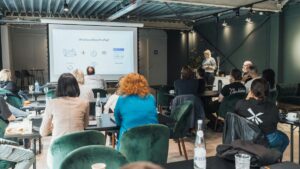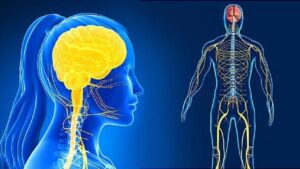For years, OMM I (Osteopathic Manipulative Medicine I) has had a reputation for being complex, confusing, and even intimidating. From cranial techniques to muscle energy, many students have found the subject overwhelming in its traditional format.
But something has changed at SGA Middletown.
Thanks to a refreshed, student-centered approach to OMM I, students are not only understanding the material—they’re excited to learn it. Attendance is up. Confidence is growing. And for the first time, students are walking into lab with smiles, not stress.
What’s New in the OMM I Approach at SGA Middletown?
The secret to this success isn’t magic—it’s smart, research-based teaching strategy that blends active learning, clinical relevance, and student engagement.
1. Hands-On First, Theory Second
Instead of starting with textbooks and PowerPoint slides, students are now jumping right into palpation labs. By feeling before reading, they build a physical connection to the concepts—which makes retention stronger and more natural.
2. Clinical Scenarios from Day One
OMM isn’t just about memorizing techniques. The new model introduces real clinical cases early on. For example, instead of just learning how to perform a rib raising, students explore when and why it’s used in actual patient care. This contextual learning makes each technique more meaningful.
3. Peer-to-Peer Skill Building
Students now work in rotating lab partners with structured feedback sessions. Practicing with different body types, postures, and communication styles gives them the adaptability they’ll need in clinical settings.
4. Interactive Review Tools
Gone are the days of passive lecture review. Students have access to flashcard apps, video demos, and interactive quizzes specifically designed for OMM I. These tools are reinforcing concepts faster and helping students prepare for practicals with confidence.
Why Students Are Loving It?
- Less memorization, more understanding
- Greater confidence during labs and exams
- Clearer connections between osteopathic principles and clinical outcomes
- Better test scores and lab evaluations
One of the biggest wins? Students are finally seeing OMM not as a requirement, but as a clinical advantage.
How This Approach Sets Future DOs Apart
At its core, osteopathic medicine is about whole-person care—and OMM is a major part of that philosophy. By making OMM I more engaging, students are not only passing exams—they’re developing hands-on skills that will make them more empathetic, effective physicians.
At SGA Middletown, this shift reflects a broader mission: to make sure every student sees the value in what they’re learning and how it will apply in real-world patient care.
Conclusion: OMM I Just Got a Major Upgrade—And Students Are Noticing
The new approach to OMM I at SGA Middletown is more than a curriculum change—it’s a mindset shift. With clinical integration, active learning, and student feedback at the core, OMM is becoming a highlight of the first-year medical experience.
If you’re worried about how you’ll survive OMM I, know this: you don’t need to fear it anymore. This strategy isn’t just helping students pass—it’s helping them thrive.
FAQs
What is OMM I in medical school?
OMM I (Osteopathic Manipulative Medicine I) is the foundational course that introduces students to hands-on diagnosis and treatment techniques based on osteopathic principles.
Why is OMM considered difficult?
Many students struggle with the physical and conceptual components of OMM, especially if they’ve never worked with manual therapy techniques before. It requires spatial awareness, clinical judgment, and confidence in touch.
How is SGA Middletown changing the way OMM I is taught?
The new approach emphasizes early hands-on practice, real-world case integration, interactive tools, and collaborative learning—all of which help students engage more deeply with the material.
Does this new strategy help with board exams?
Yes. By focusing on functional understanding and clinical relevance, students are retaining information better and scoring higher on OMM-related sections of board exams like COMLEX.




